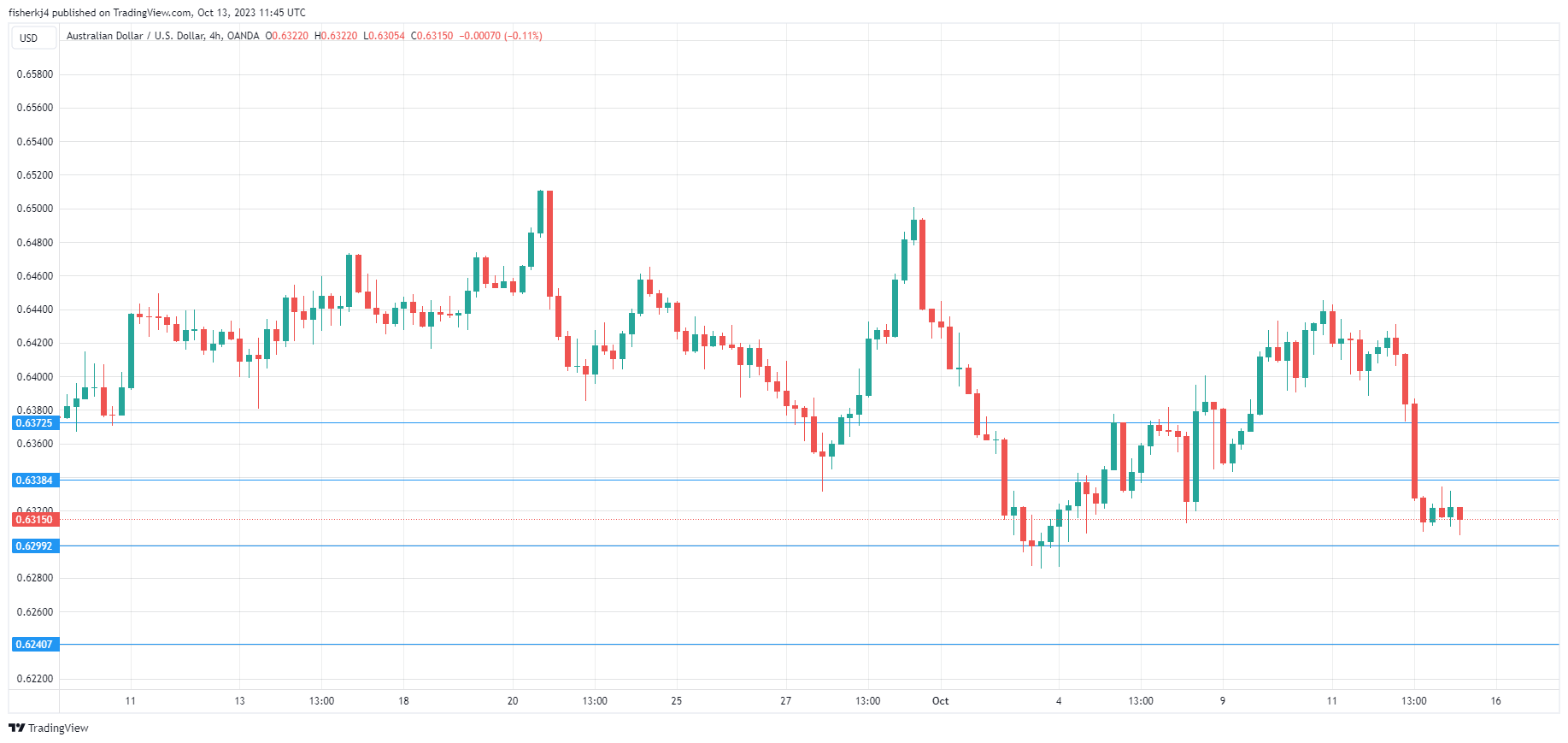- China inflation dips to 0.0%
- Australian dollar sinks after US inflation and employment data
The Australian dollar is unchanged on Friday, trading at 0.6312. The Aussie was roughed up by the US dollar a day earlier and plummeted 1.56%, its largest one-day decline since August.
The sharp downswing was driven by US inflation and unemployment reports on Thursday. Inflation remained unchanged at 3.7% in September, but this disappointed the markets as the consensus estimate stood at 3.6%. Unemployment claims were unchanged at 209,000, as the US labor market remains at historically tight levels. The strong US numbers gave the US dollar a significant boost against the major currencies and risk currencies like the Australian dollar were particularly hit hard.
The data points to strength in the US economy, which could result in the Fed being forced to maintain elevated rates, perhaps even raising rates one final time before the end of the year. The Fed rate odds stand at 29.5% for a quarter-point increase before year’s end, which means that the markets are expecting the Fed to hold rates into 2024 but have not ruled out a hike before then.
China’s Inflation Falls to 0.0%
Another headache for the Australian dollar is the economic slowdown in China, which is Australia’s largest trading partner. China’s inflation was 0% y/y in September, following 0.1% in August and missing the market consensus of 0.2%. China continues to grapple with deflationary pressures and expectations for a strong recovery after the Covid restrictions were scrapped have not materialized. The slowdown in the world’s number two economy could trigger a global recession and is bad news for Australia’s export sector and for the Australian dollar. Since August 1st, AUD/USD has declined 400 basis points and the outlook for the Aussie remains challenging.
AUD/USD Technical
- AUD/USD is putting pressure on resistance at 0.6338. Above, there is resistance at 0.6372
- 0.6299 and 0.6240 are providing support


